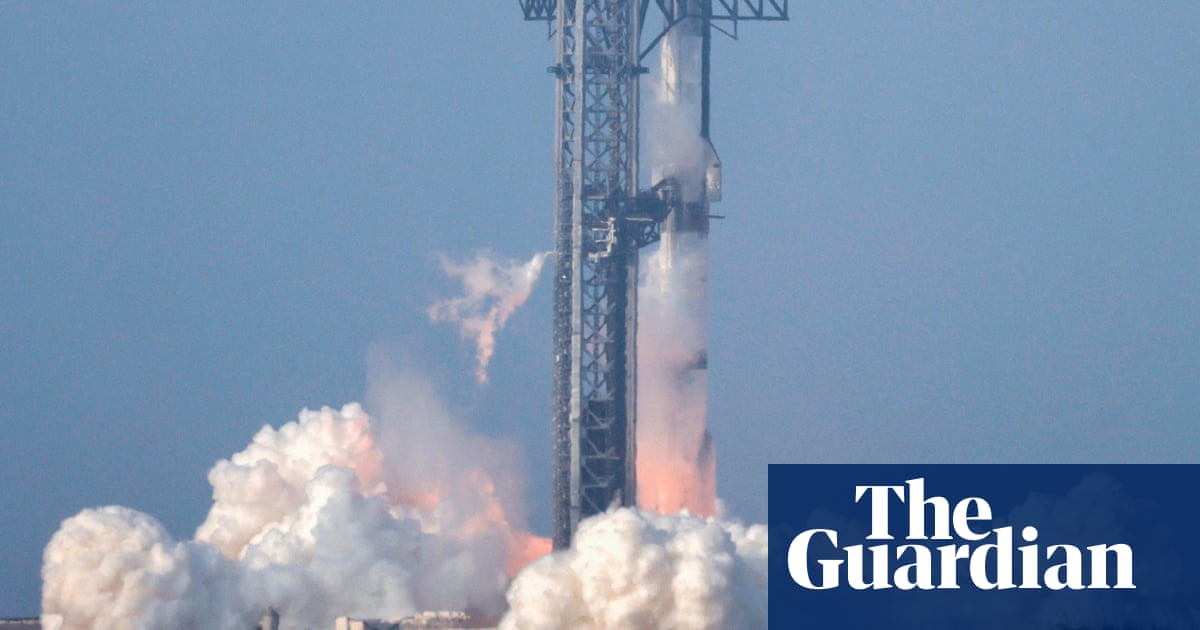SpaceX mission control lost contact with its latest Starship rocket on Tuesday, as it leaked fuel, spun out of control, and made an uncontrolled re-entry after flying halfway around the world, likely disintegrating over the Indian Ocean, officials said.
“Just to confirm, we did lose contact with the ship officially a couple of minutes ago. So that brings an end to the ninth flight test,” said SpaceX’s Dan Huot during a live feed.
Starship, the futuristic rocket on which Elon Musk’s ambitions for multiplanetary travel are riding, roared into space from Texas on its ninth uncrewed test launch and flew further than the last two attemptsthat ended in explosive failure.
The two-stage spacecraft, consisting of the Starship vessel mounted atop a towering SpaceX Super Heavy rocket booster, blasted off at about 7.36pm EDT from the company’s Starbase launch site on the Gulf Coast of Texas near Brownsville.
SpaceX launched the Starship system with a previously flown Super Heavy booster for the first time, aiming to achieve a key demonstration of its reusability. As expected, the 71 metre first-stage rocket separated from the upper-stage Starship vehicle several minutes after launch and headed back toward Earth.
But SpaceX controllers lost contact with the booster during its descent before it presumably plunged into the sea instead of making the controlled splashdown the company planned.
The upper-stage Starship vehicle continued to climb to space, reaching its planned suborbital trajectory about nine minutes into the flight. In one test-flight mishap, Starship’s payload doors failed to open in order to release a group of simulated satellites.
Plans called for Starship to complete its experimental flight of less than 90 minutes with a controlled descent and splashdown in the Indian Ocean.
But about 30 minutes after launch, SpaceX said its flight team had lost attitude control over Starship, leaving the vehicle in a spin as it continued to head for atmospheric re-entry.
“We will not be aligned as we wanted it to be aligned for re-entry,” a SpaceX commentator said during the livestream. “Our chances of making it all the way down are pretty slim.“
Federal regulators granted SpaceX a licence for Starship’s latest flight attempt just four days ago, capping a mishap investigation that had grounded Starship for nearly two months.
Itslast two test flights– in January and March – were cut short moments after liftoff as the vehicle blew to pieces on its ascent, raining debris over parts of the Caribbean and disrupting scores of commercial airline flights in the region.
The Federal Aviation Administration expanded debris hazard zones around the ascent path for Tuesday’s launch.
With Reuters and Agence France-Presse
